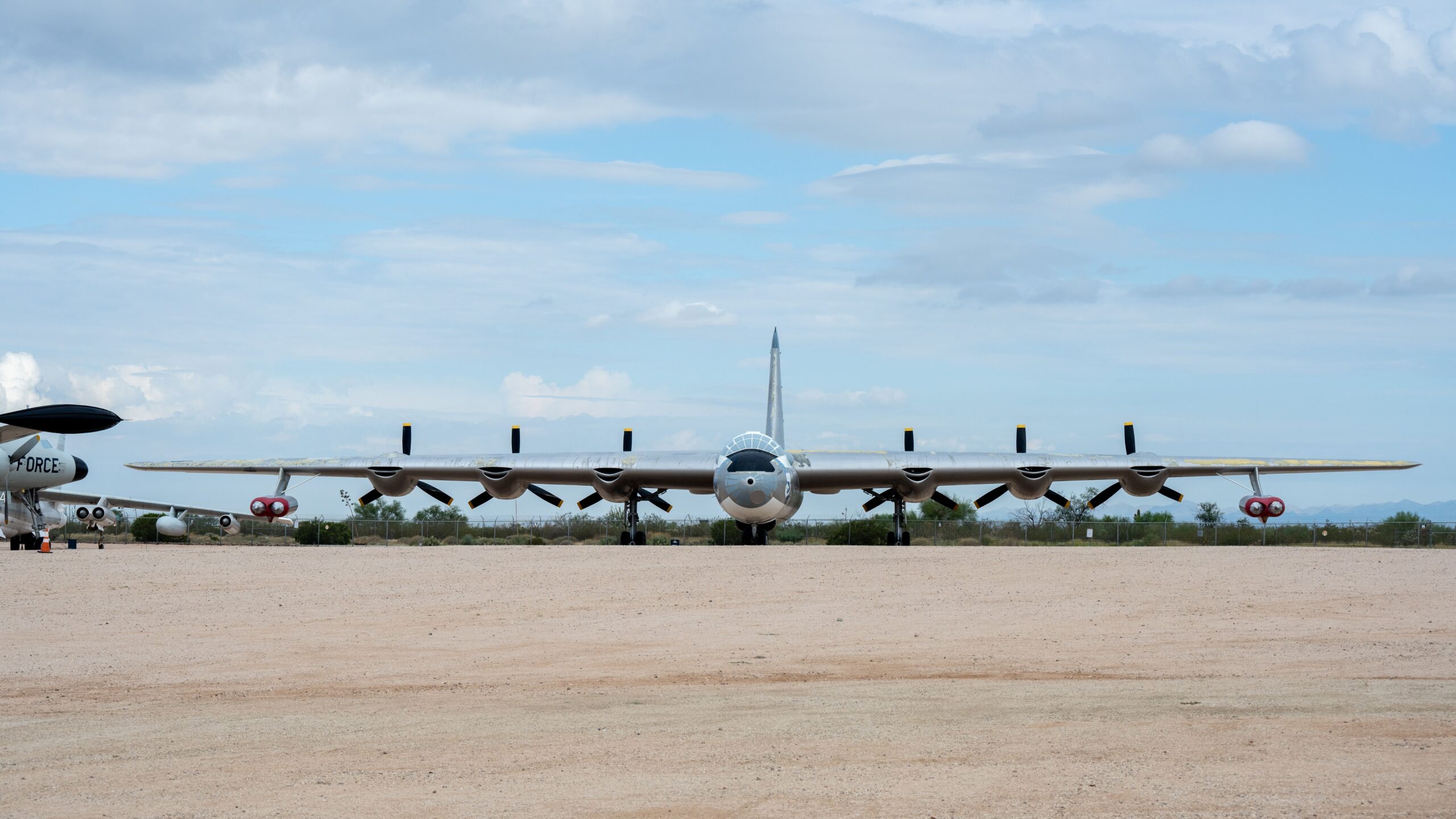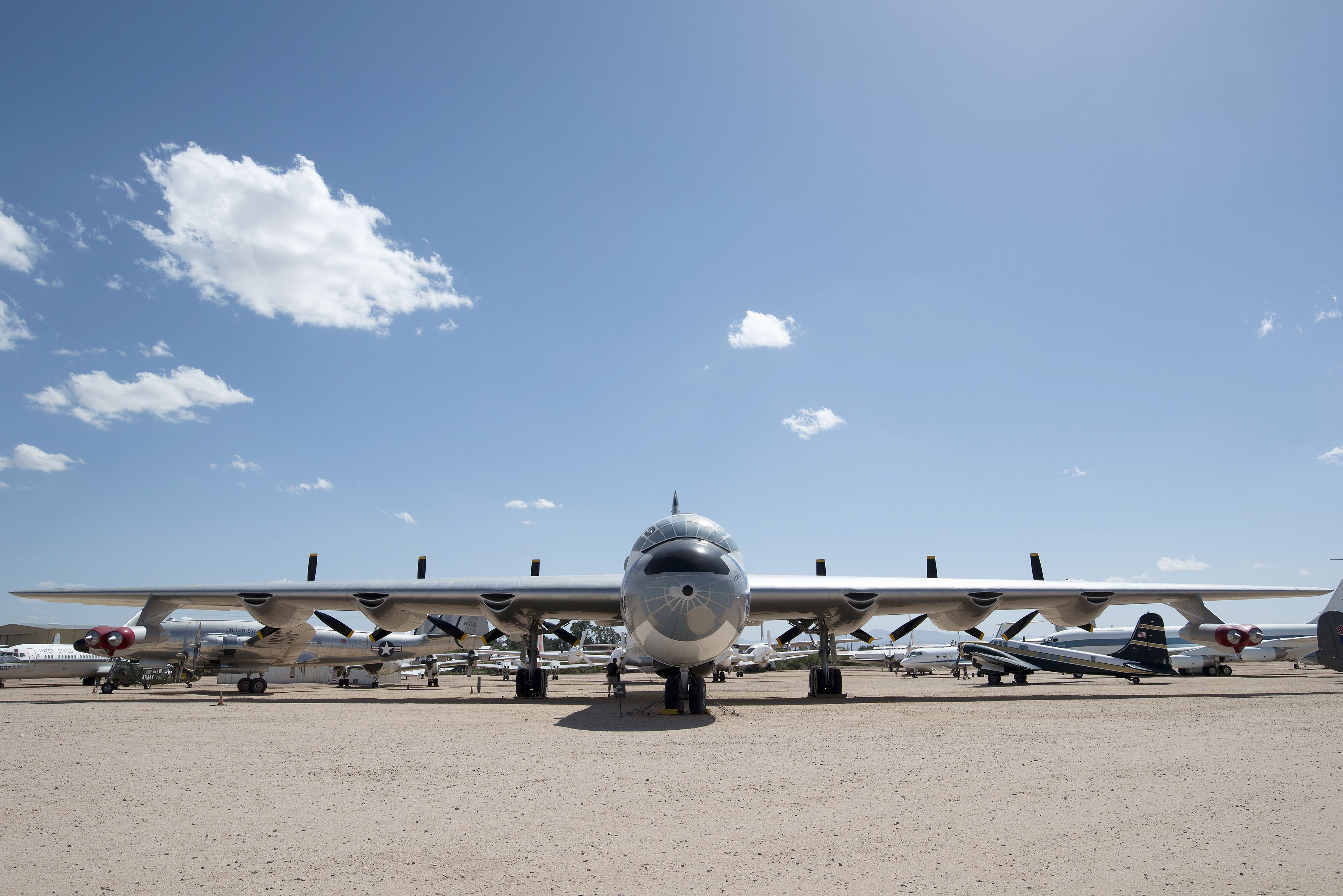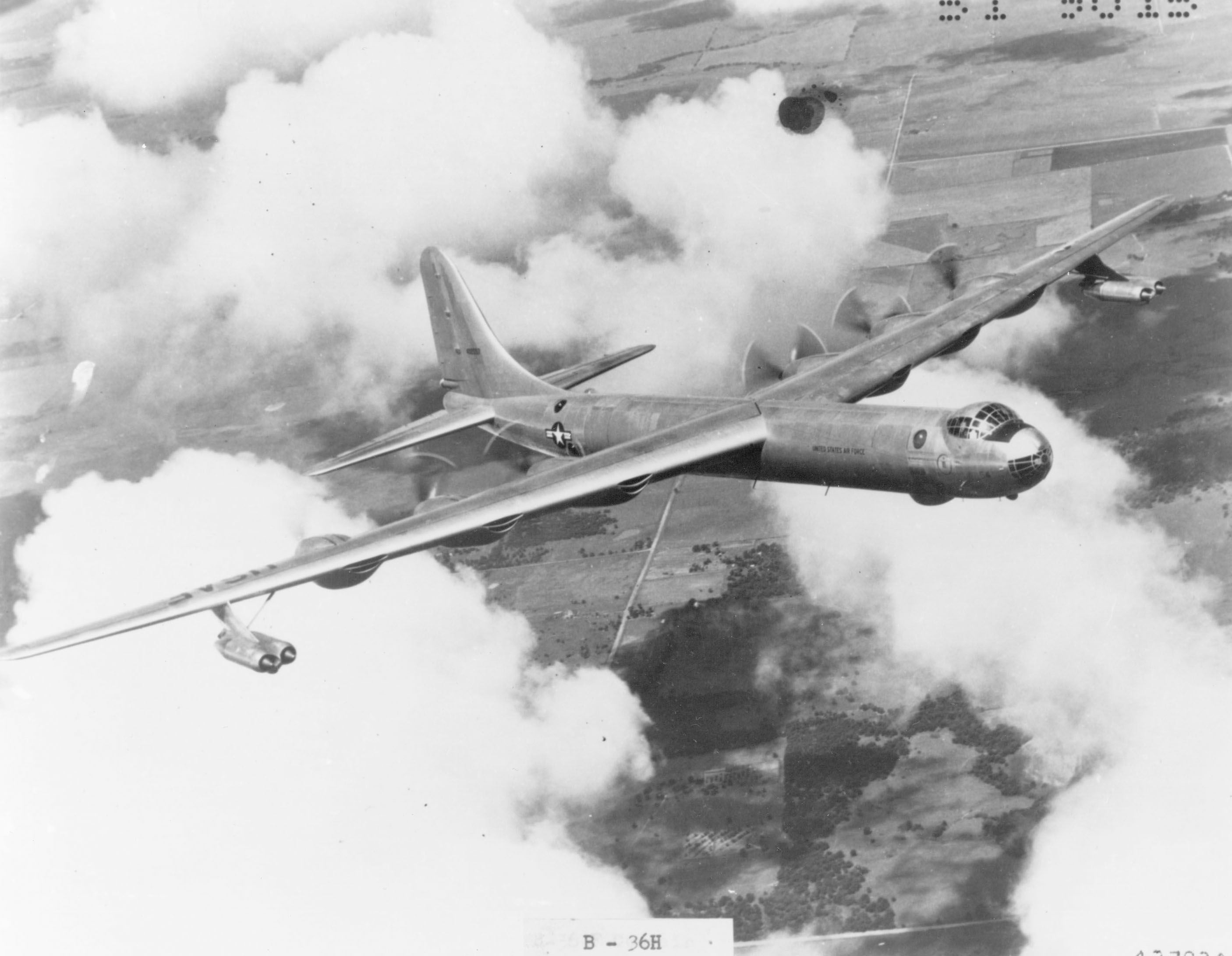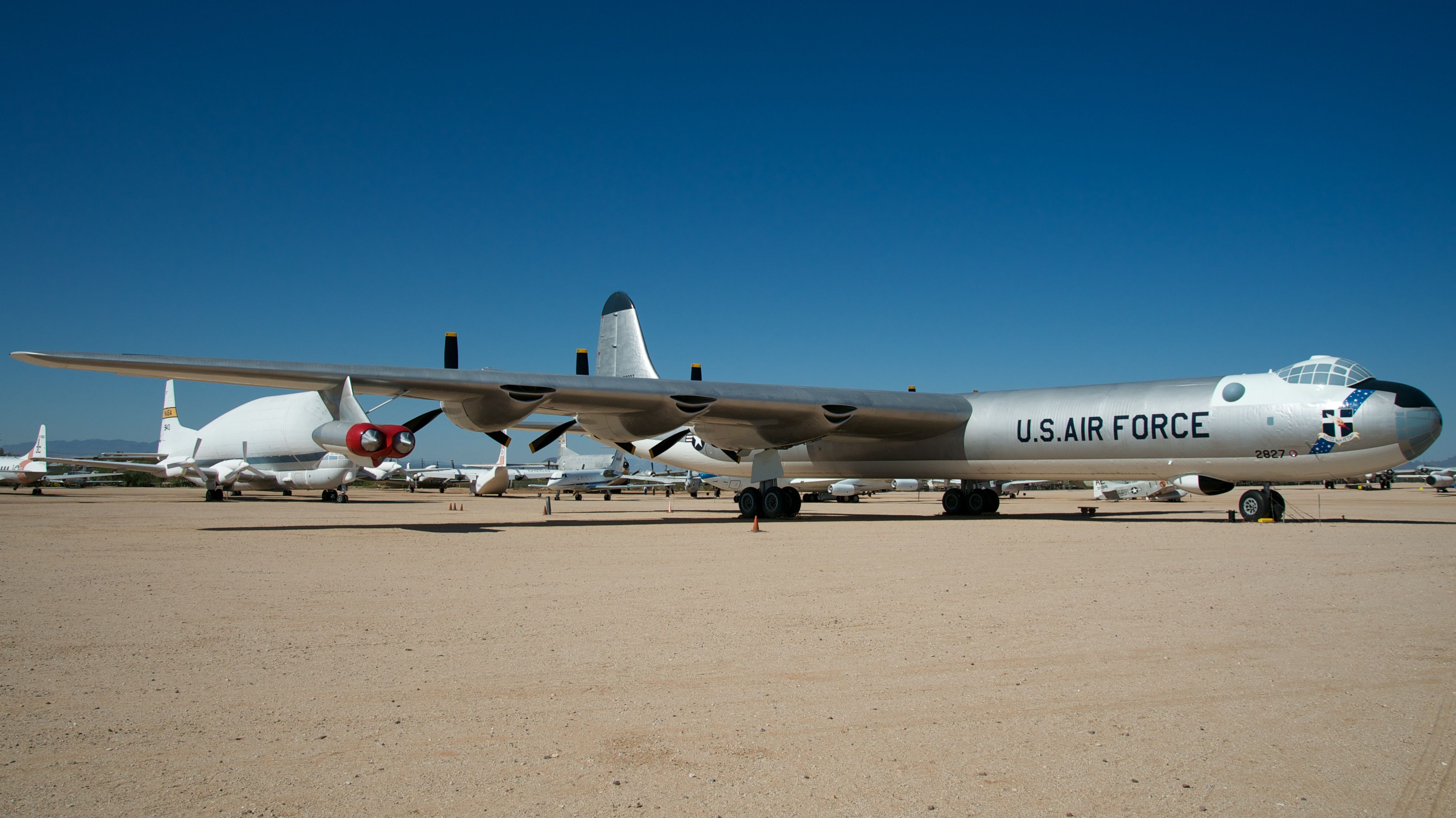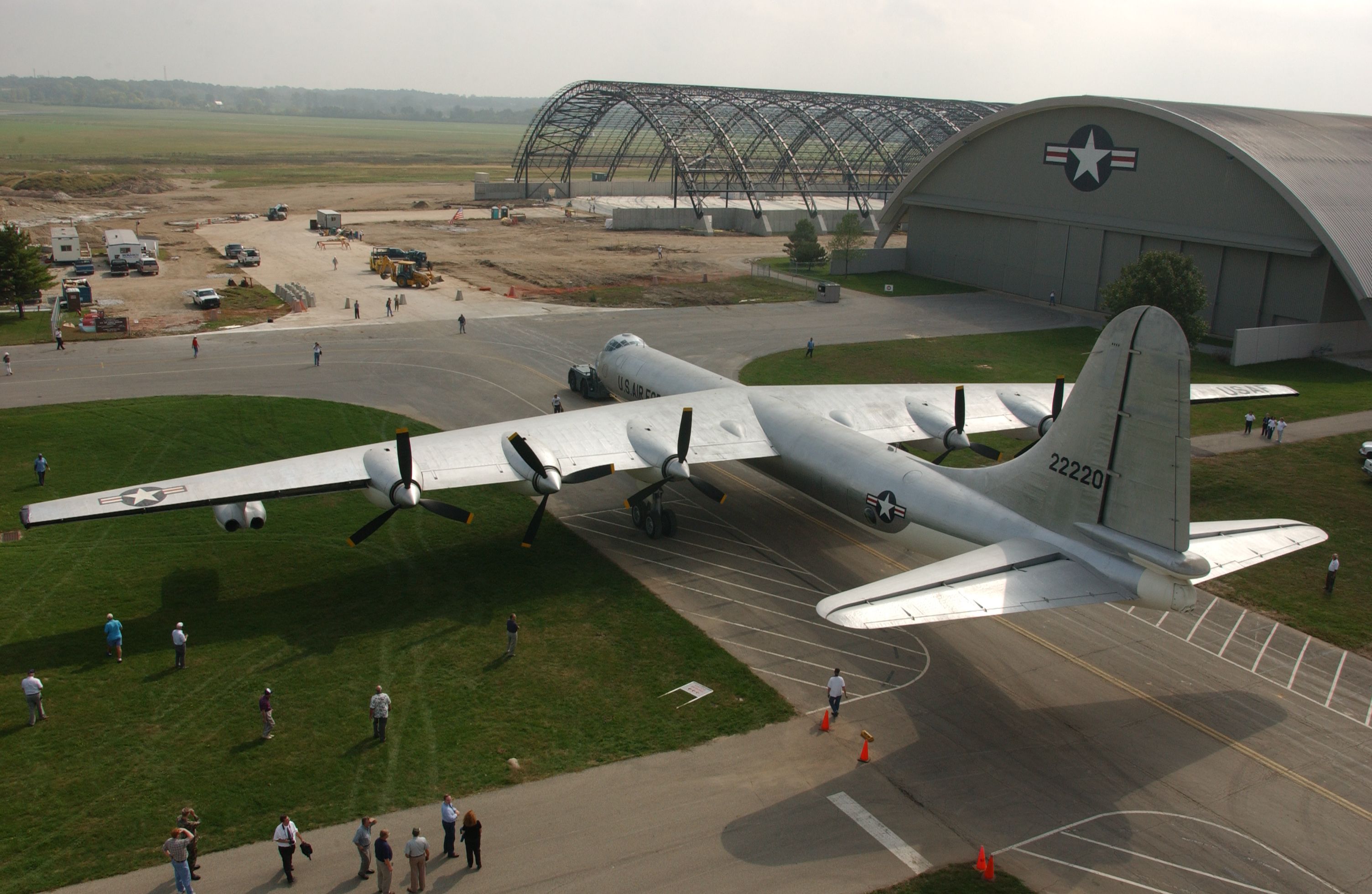Between the legendary B-29 and enduring B-52 bombers lies one of the largest aircraft in history. The B-36 was largely overshadowed by its longer-lasting siblings but was notable for its ten engines, which used a combination of propulsion systems. Consolidated Vultee Aircraft Corporation (later known as Convair) built almost four hundred aircraft, with only four examples remaining today.
What inspired it?
The aircraft was designed in response to the needs of the US Army Air Forces for a strategic bomber with intercontinental range. This was seen as crucial towards the end of World War Two as a layer of protection should Britain fall with the rest of the continent.
Photo: US Air Force
It arrived too late to make a difference, with the first operational B-36A delivered in June 1948 to Strategic Air Command’s 7th Bomb Group at Carswell Air Force Base – across the runway from the aircraft assembly plant.
Trying it on for the size
Convair’s B-36 was significantly larger than its predecessors and was two-thirds longer (162 feet) than the B-29. The aircraft’s wingspan of 230 feet (70.1 meters) is the widest of any combat aircraft in history. Not even the Boeing 747 reached such spans.
Photo: tishomir | Shutterstock.com
The massive aircraft was powered by six Pratt & Whitney R-4360 engines in a ‘pusher’ configuration, which were capable of cruising at 230 mph. Shortly into production, four General Electric J47s were added to existing and incoming aircraft to increase the maximum speed to 435 mph, leading to the B-36 slogan of “six turning and four burning.”
The plane remains the largest piston-powered combat aircraft ever. The retrofitted and final production model engines produce a combined 44,000 horsepower, one of the only aircraft ever powered by both types of engines. The B-36 lacked inflight refueling capabilities, but the wings were 7.5 feet (2.3 meters) high to accommodate the fuel needed to support a 10,000-mile range. The wings even contained a crawlspace that allowed the crew to access the engines and landing gear.
Photo: USAF
Another crawlspace connected the front and rear cabins. Passengers would have to lie on a wheeled cart and pull themselves down the 85-foot tunnel, only two feet in diameter. The aft compartment contained the six bunks, a small toilet for the 40-hour missions, and a galley to prepare food (which would then be sent back up the cart to the cockpit). A typical crew included a pilot, copilot, bombardier, flight engineer, radio operator, radar operator, two navigators, two electronics operators, and five gunners.
Mission complete
Production of the type ended in August 1954, after 384 examples had been built for the US Air Force. The Peacemaker never saw combat despite its maximum payload of 87,200 lb (39,600 kg) and range of 10,000 miles (16,000 km). The advent of the all-jet B-52 swiftly led to the aircraft becoming obsolete.
Several B-36s operated as photographic reconnaissance aircraft. One model was modified to carry an active nuclear reactor. Another aircraft was fitted with a special system to launch and retrieve a specially modified Republic F-84F Thunderstreak. Two models were also converted to an all-jet configuration and renamed the XB-60.
There was also a single cargo version developed. The double-decker XC-99 never made it to mass production, but the Air Force used the working prototype for eight years.
The final four
Four surviving models remain on display across the United States.
- The last B-36 built, the City of Fort Worth (52-2217A), is at Arizona’s Pima Air and Space Museum.
- The only reconnaissance version of the B-36 (RB-36H), bearing the serial number 51-13730, is on display at Castle Air Museum in Atwater, California.
- The Strategic Air Command and Aerospace Museum in Nebraska hosts model 52-2217A, along with one of two XF-85 Goblins, the “parasite fighter escort” designed to be carried underneath the B-36.
- A final B-36 (52-2220) is displayed at the National Museum of the United States Air Force in Ohio.
Photo: US Air Force
What are your favorite B-36 Peacemaker memories? Let us know in the comments below.

